|
Getting your Trinity Audio player ready...
|
If you came here looking for how to create digital products, chances are you’ve already seen many solopreneurs excelling in this profitable niche. It’s no secret that many digital products require low investment but offer high margins.
The main investments digital products require are your skills and time. What’s more, digital products are more scalable than their counterpart, tangible or traditional products.
But since digital product creation has grabbed the attention of many people, the market has seemingly become saturated. But that doesn’t mean you can’t enter the field or achieve success, given you have expertise in your field.
The right skill set and dedication help you break the competition and achieve success.
Before we dive into how to create and launch a digital product, here’s a quick summary of why digital products are an attractive business avenue:
- They can be extremely profitable.
- They can be created on a shoestring budget.
- They’re infinitely scalable.
What Is a Digital Product?
A digital product is an intangible item that can only be accessed with an electronic device such as a laptop, mobile phone, and tablet. Some mainstream digital products include PDFs, eBooks, podcasts, and online courses.
Since digital products exist in the non-physical realm, they’re usually easier and cheaper to create, modify, and distribute than their physical counterparts.
Digital product business has a low barrier to entry, which means you can easily step into it. But at the same time, this niche now has a staggering amount of competition.
Related article: Why You Need Dripify for Small Business
The Best Digital Product Examples
Let’s dig deeper into the types of digital products with the help of a few examples:
Ebooks & Audiobooks
Ebooks make one of the top information products consumers like to spend their money on. Even better, the number of eBook readers is expected to grow up to 1.123 billion by 2027.
Moreover, eBooks are easier to create, requiring written text and a bit of graphics. And since they’re greatly lucrative in the non-fictional/educational categories, you don’t need to be a creative genius to create one. Just write what your expertise and passion call for — how-to guides, meal prep plans, workout guides, and blueprints, to name a few.
Online Courses
Do you have a knack for teaching? Or maybe you have a proven track record in a particular discipline! If so, online courses are an excellent way to package your expertise into a profitable digital product.
Once you pick a course topic, choose your delivery format (audio, video, text, etc.), design your curriculum, and start creating content.
Back in the day, it was challenging and expensive to create a course and purchase an LMS for it. But with WordPress plugins, you can easily host them on your website.
Alternatively, you could leverage one of the online courses platforms, such as Udemy, Teachable, or Kajabi, to monetize your course without marketing yourself and capitalizing on an already established audience.

Digital Art
For those talented in graphic design, creating digital art products could be a great source of income.
Here’s the non-exhaustive list of digital products in this domain:
- Logos
- Brand kits
- Design templates
- Adobe files and templates
- Affinity Photo templates
- PowerPoint themes
- Banners
- Clip art
- Stock icons (vectors)
- Card designs
Considering the wide array of art forms, digital art has a huge customer base (both on a corporate and individual level). Small business owners need logos and flyers; social media marketers need visually appealing posts; app developers need UI designs, etc.
You could also branch out into NFTs, a hot topic today.
Video Content
VOD services like Netflix are enough to imagine the scope of present-day video content. But this highly engaging format goes beyond entertainment and covers informational and educational topics as well.
Travelers worldwide are recording their experiences through vlogs and making good money. Others are tapping into emerging concepts like food vlogs and showcasing their local cuisines.
There’s no shortage of people who’d love to watch your travel documentaries, comedy skits, gaming videos, or short films.
Templates
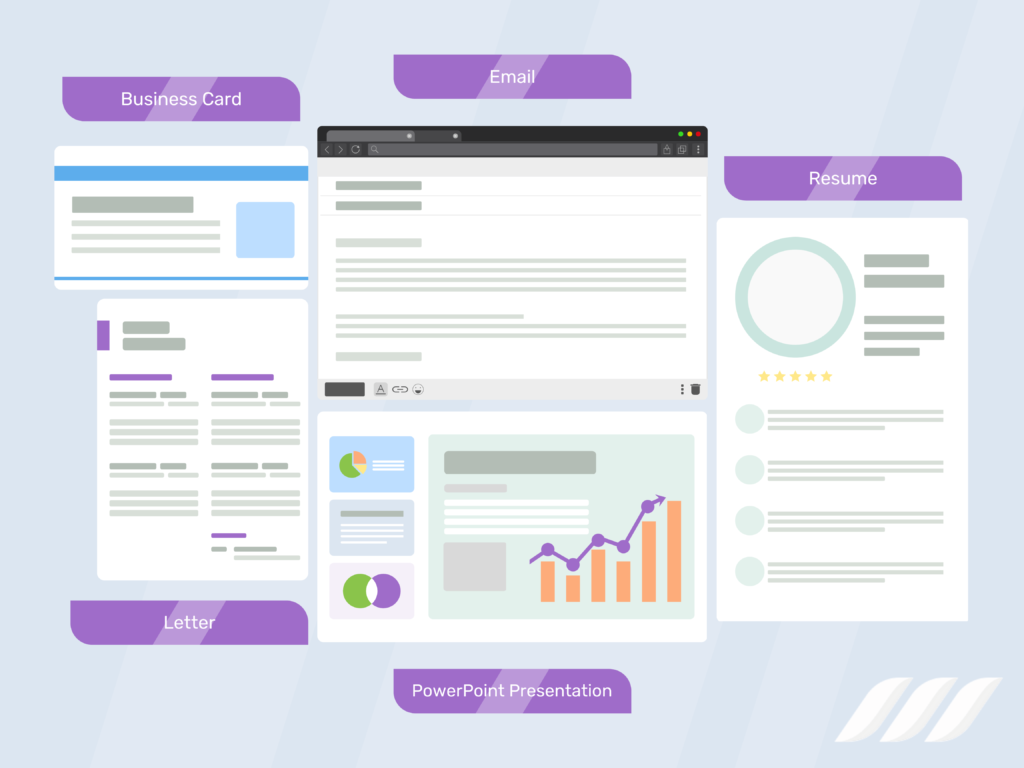

Templates are another useful digital product for a range of applications. For some, it acts as an inspiration to center their content around; for others, it provides a framework to develop content.
Depending on your interest, you can create different kinds of templates. Examples include resumes, emails, letters, PowerPoint presentations, and business cards.
That said, there’s a new segment of templates that deserves a separate mention — cloud-based design templates.
Platforms like Canva and VistaCreate host various graphics templates, allowing for quick and easy design creations. If you have design skills, you can also sell them your work and capitalize on their well-established market.
Photography
The demand for high-quality photos is always there, especially among bloggers, marketers, advertisers, and website owners.
One popular way to monetize your photography talent is through stock photography.
Here’s how it works:
- You upload your imagery on the service platform,
- consumers pay a fee to use your photo, and
- the fee splits between you and the platform.
Other relevant digital products are drone photos, event photos, backgrounds, and product photos. Photography is a competitive avenue, but if you produce next-level images, set competitive pricing, and target the right audience, you can stay ahead of the curve.
Software
With an expected annual growth rate of 6.5%, revenue from the software market will reach $812.9 billion by 2027. Naturally, creating software could be the most profitable digital product of all.
From individuals to small business owners to large enterprises, the need for softwares is everywhere:
- WordPress plugins and themes
- Mobile apps
- Fitness apps
- Video games
- Windows/Android/iPhone apps
- Project management apps
That said, you may need a grip on coding skills to create software products. Regardless, the returns on investment can be massive with software development.
Benefits of Selling Your Own Digital Products
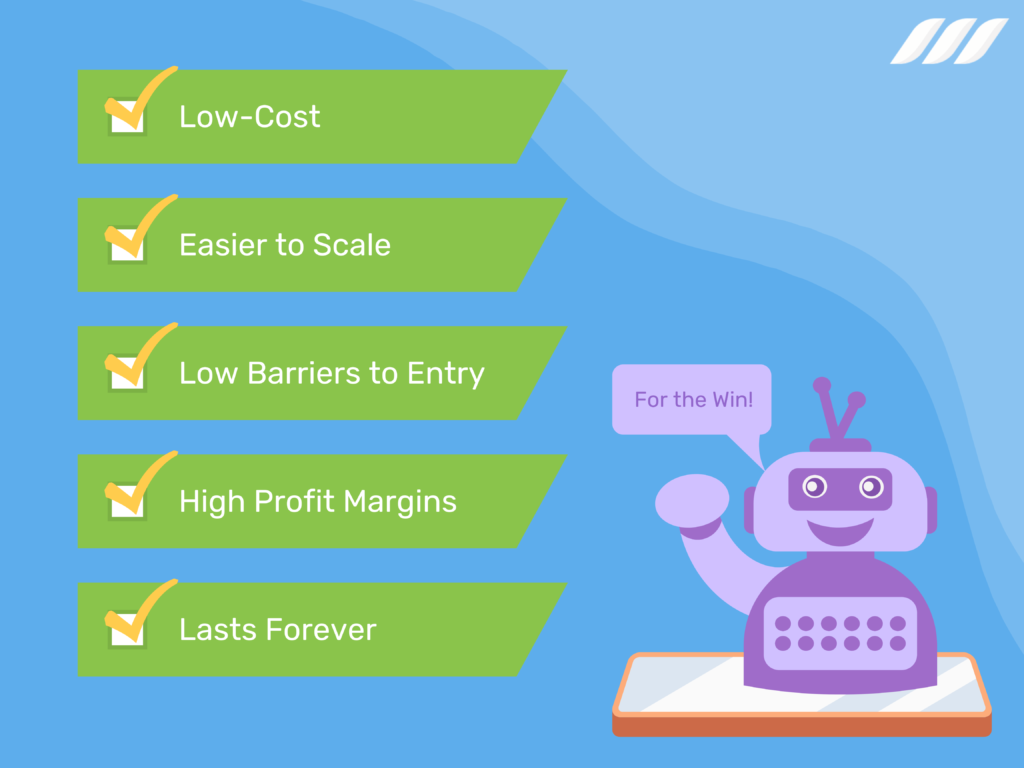

Low-Cost
A digital product is cheaper to produce and involves little to no risk. Let’s get an idea of the upfront expenditures you can save by producing and launching a digital product.
- Raw materials
- Manufacturing
- Storing and warehousing
- Packing and fulfillment
- Shipping expenses
Apart from these, you don’t need any brick-and-mortar stores for your digital products, which saves overheads like electricity, salaries, rent, POS software, etc.
And unlike physical products, you won’t need a big staff to sell and manage your items. You can automate so many processes like checkouts, demonstrations, delivery of goods, and follow-up emails with softwares.
Easier to Scale
While online physical product stores have shipping/logistics concerns, setting up brick-and-mortar stores can only be practically possible for limited locations. With digital products, you can easily enter different markets, expand your reach, and even tap into global markets.
For example, if you produce gaming avatars, you can meet gaming enthusiasts on the Steam community and sell your products. If there’s declining demand in one region, you can shift your focus to another.
Low Barriers to Entry
Having the right skill and an electronic device (laptop/tablet/smartphone) means you have what it takes to enter the market. You’re not dependent on stakeholders like suppliers, manufacturers, and fulfillment vendors.
That said, what will dictate your long-term success is your competitive advantage, which depends on factors like price points, value delivered, quality, after-sales service, etc.
High Profit Margins
Since you get exempted from high upfront costs and overheads, you’re more likely to earn high-profit margins. You may still need to pay for digital marketing and ads, website hosting, and eCommerce platform subscription, but their costs are relatively much lower.
A relief in production/running costs and access to a wider consumer base means you can reduce prices, lower your profit margins, and earn more by boosting your sales volume.
For example, you may have to sell your paperback book for $50 due to your production cost and limited in-store footprint. But its digital form may allow you to sell it for $5 and maybe earn x10 more.
Digital Products Last Forever
Digital can be indefinite without suffering a dent in quality. This means, unlike physical products, you don’t have to worry about wear, tear, or deterioration. Besides, there are no storage and warehousing challenges.
Digital products can indeed become obsolete over time. However, you can meet changing demands and customer feedback without discarding your existing product line. This could involve improving your products by adding new features, fixing bugs, and even providing a personalized experience.
Moving on, you never run out of stock with your digital products as you can sell their unlimited copies. Put your effort in once and generate a good passive income for years and years.





How to Create Digital Products in 9 Steps
Here’s your step-by-step guide to creating a digital product:
1. Pick Your Niche
First off, it is vital to pick a niche based on your interest, skill set, and feasibility. When you find a potential niche, ask yourself:
- Is there a niche that I’m more interested in?
- What’s the degree of my experience and skill set?
- How much competition exists in your niche?
- Do I have the prerequisites to pursue it?
While you’re at it, don’t buy into the idea of picking one because it’s supposedly more lucrative. Any niche will make you good money provided you’re solving a problem.
Sure, some may be too competitive, but your interest level will be a big driving force in beating your competition.
2. Conduct Market Research
Once you’ve figured out your niche, move on to market research to close in on your target audience, their problems, and your potential competition.
At this stage, your biggest goal is to find out:
“What problem can I solve that people would be willing to pay me for?”
Here are some of the ways you could conduct your market research:
- Explore social media to see what’s trending.
- Join niche-specific groups on LinkedIn and other social networks to find out topics of discussion.
- Use media monitoring tools for comprehensive market research and gather insights from various online sources in one platform.
- Use Google Trends and Google Keyword Planner to know what people are searching for.
Next, you’ll need to converge on product ideas. You’d want to land on a high-demand and low-competition product as you brainstorm product ideas. Then, analyze what products already exist and how you can fill in the gap to stand out.
3. Understand Your Target Audience
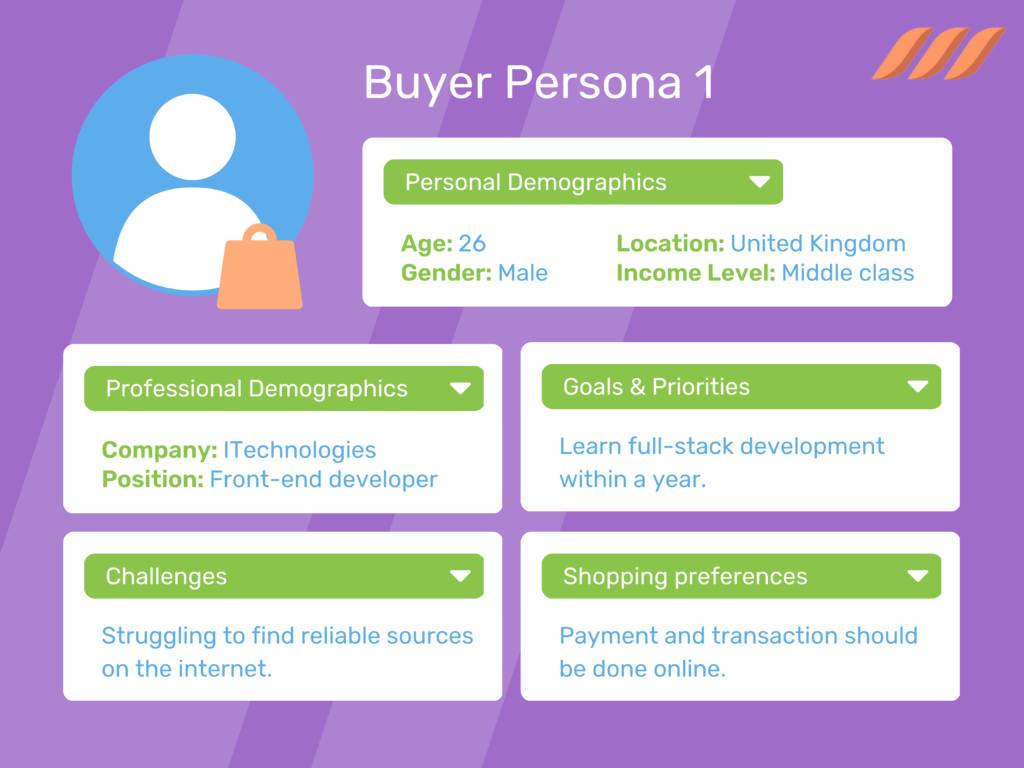

Having an accurate understanding of your target audience’s pain points is crucial to product development. To have a clear picture of your potential customers, create a buyer persona that looks covers elements like these:
- Personal demographics: age, gender, location, income level;
- Professional demographics (business-specific details);
- Goals, challenges, priorities, motivations, and values;
- Shopping preferences.
You could also send personalized surveys to dive into your audience’s problems and exceptions. Consider including questions like:
- What’s your biggest struggle when it comes to [insert your niche]?
- Would you purchase a product that could solve this problem?
- If I could help you with one thing, what would it be?
- If I make a guide on [insert topic], what format would I like? (List formats like video, print, and audio).
- How much would you be willing to spend on a product that could [insert your solution]?
Related article: How to Create an Ideal Customer Profile
4. Write a Positioning Statement
By now, you may have got a few ideas for your potential digital product. It’s time to create a positioning statement to understand your product clearly. This will help you collaborate with influencers and thought leaders down the road.
Your positioning statement should answer these questions:
- Who is your product for?
- What is your product niche?
- What does your product do?
- What are your product’s benefits?
- What separates your product from what’s already being offered?
5. Set Competitive Pricing
When you’re just starting, keeping your prices lower than what your top competition is asking is safer. So, for instance, if you’ve shortlisted seven competitors, and the cheapest of them is $10, you’d want to set $8 or 9 for your digital product.
Some other pricing strategies:
- Use tiered pricing, especially for membership/subscription
- Demonstrate how much they’re saving with packages
- Offer a free plan or a free trial
- Include price comparison to assert the market’s best price
6. Set Up a Waiting List


What a waste it would be if you invested your time, energy, and budget in a digital product that fails miserably! A waiting list is a great way to validate your product idea and increase its success odds.
The idea is to create hype and get people to anticipate your product. The more people express interest by heading to your signup page, the more you can be confident about your product.
You may want to dedicate a website landing page to your product idea. Use SEO techniques to have the page indexed by search engines and create relevant content to educate your target audiences about your product and its benefits.
It is also a good idea to offer something for free — course concept or downloadable product/service, pre launch discount, exclusive webinar access, and more — in exchange for the recipient’s email address.
Once you have the email list, you can start engaging your leads with email marketing campaigns and fuel their interest.
7. Post Free Content
Next up, it’s time to get people to your landing page through the indirect route — free content.
Creating high-quality content on your social media page and website is one way you could go about this step. Make sure to keep your content relevant to your market, up-to-date, engaging, and useful.
If you pull off this part, you’ll start making a consistent following. What’s better, even some industry experts, brands, and influencers might share your content, giving you more limelight.
Guest posting is another powerful weapon to drive traffic to your product page and get new entries on your waiting list.
What you basically do is hunt successful blogs in your niche and pitch them topics you could write on. If accepted, you’ll write guest posts for them and use their established audience to your advantage.
Use this opportunity to educate your target audience about your digital product and redirect them to your channels with the embedded links.
8. Create Minimum Viable Product
Before your final product, it’s worth making an MVP/beta version to test your product, analyze responses, and make necessary tweaks.
To test your beta version, create a small group of testers, which could include your potential buyers and market leaders. Offer them free access to your beta version and record their experience through a survey.
This could help you find out:
- If your product is solving the “X” problem successfully.
- If your product offers the best value for money.
- What problems were encountered while running your product?
- What was felt missing in your product?
- Improvement suggestions for your product.
Use the collected information to finetune your digital product before its official release. You could also generate testimonials for the positive experiences and post them on your product page to gain the audience’s trust.
9. Select Tools and Platform
Once your product is ready, you’ll need a platform to host and sell it. At this point, you should know:
- Where will you sell your digital product?
- How will you collect payment?
- How will you collect and store customer data?
WordPress is a powerful content management system that you could safely employ for this purpose.
With its massive collection of themes and plugins, you can create a customized eCommerce website with all the necessary features. Consider adding features like on-site payment processing, subscription billing, email marketing, social share buttons, and software licensing.
Related article: How to Find eCommerce Clients on LinkedIn


How to Launch a Product Successfully
Now that your digital product is ready, you’ll want to launch it successfully. Follow the steps given below:
Choose an Appropriate Launch Time
Just like physical products, seasonality can be a big factor for digital products. For instance, spending could increase during winter as people want to spend time indoors.
Your niche may have its trending wave based on seasonal dynamics:
- Planning to launch an eBook on health and wellness? Schedule it in January and make the most of New Year’s resolutions.
- Prepared a short course that could help students ace their exams? Launch it a month or two before the exam date.
- Designed a planner for DIY weddings? Launch in winter to help couples plan their wedding, which typically happens in spring and summer.
Execute Early Marketing Strategy
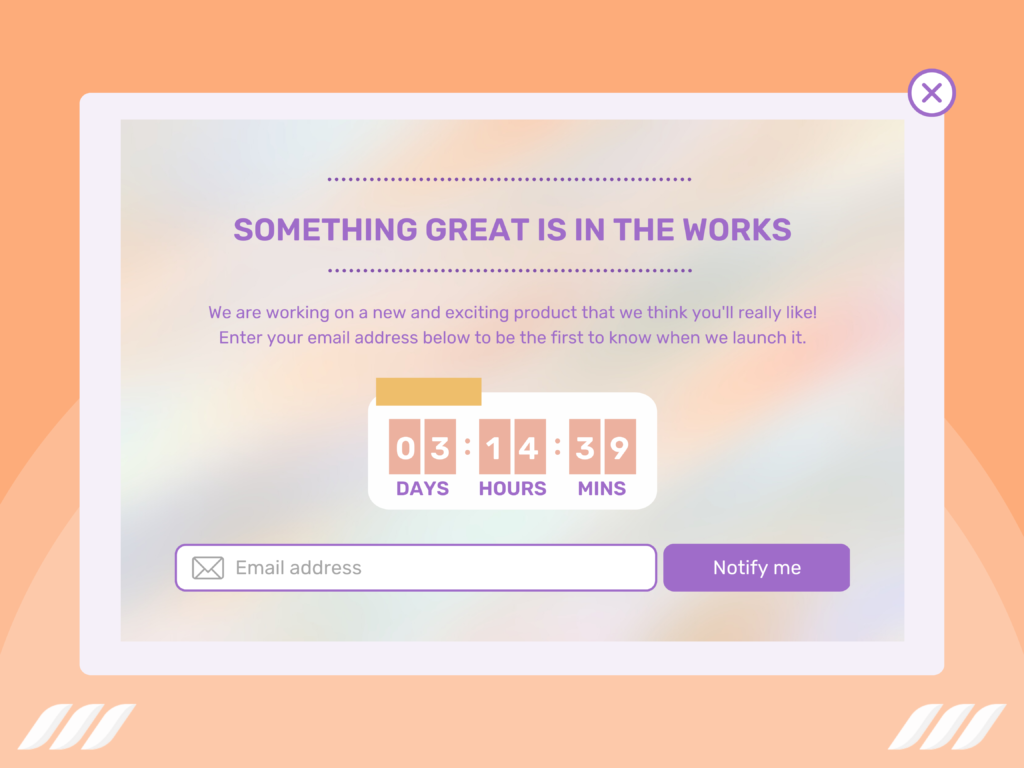

Now is the time to start the full-fledged promotion of your launch and get people excited about it. Here are some ways you could do that:
- Add a Coming Soon page (with a countdown timer) to spark curiosity.
- Develop demos and sneak peeks to familiarize your audience with your digital product.
- Schedule regular posts on your social media pages to keep people interested and engaged.
Related articles: Outbound Marketing Strategy and Inbound Marketing Strategy
Set Promotional Pricing
Consider implementing these promotional pricing strategies to minimize friction in your product’s way:
- Free Trial Period: Get people a taste of your product before they spend money on it. You can use this opportunity to get credit card details to charge automatically once the trial period ends.
- Take Pre-Orders: Don’t allow people to change their minds once your product is launched — take pre-orders!
- Offer Early Bird Discount: Combine your pre-orders with limited-time discounts to drive more sales. This will stir urgency in your target audience and motivate them to buy before the offer ends.
Extend Your Digital Marketing Channels
By now, you’ve been promoting your digital product using a blog and guest posting, email marketing campaigns, and social media channels.
It’s time to take that to the next level by involving strategic launch partners, who will act as a regular, relatable face for your digital product.
If people see their favorite Youtuber or influencer sharing a positive experience with your product, their trust level in your brand will amplify. Imagine the scale of your outreach if you engage an influencer with over a million followers on their Facebook channel!
You may even want to partner up for paid promotion by agreeing upon a fixed amount or an affiliate fee per sale with an influencer or affiliate marketer. In the latter, the promoter will earn a percentage of every sale that takes place through their affiliate link.
Execute Final Quality Assurance
Before rolling out the final version of your product, you’d want to test it extensively for quality assurance.
- Does your product work seamlessly?
- Can it handle heavy site loads and scaling?
- Does your product meet the market’s expectations?
- How well have you incorporated the feedback that was initially gathered?
Test your digital products with these indicators and make the required adjustments to make it impeccable.





Monitor Your Business
After launching your digital product, analyze key performance indicators to uncover your strong suits and areas of improvement. Some KPIs examples could be:
- Paid vs. organic traffic
- Bounce and churn rates
- Number of sessions and session durations
- Customer lifetime value
Besides analyzing your website, factor in marketing measures and lead capture strategies.
Related article: Key Business Growth Metrics
Ask For Feedback
Feedback will be a direct way to gauge your customer response and use it to improve your digital product. Some of the ways you could collect feedback:
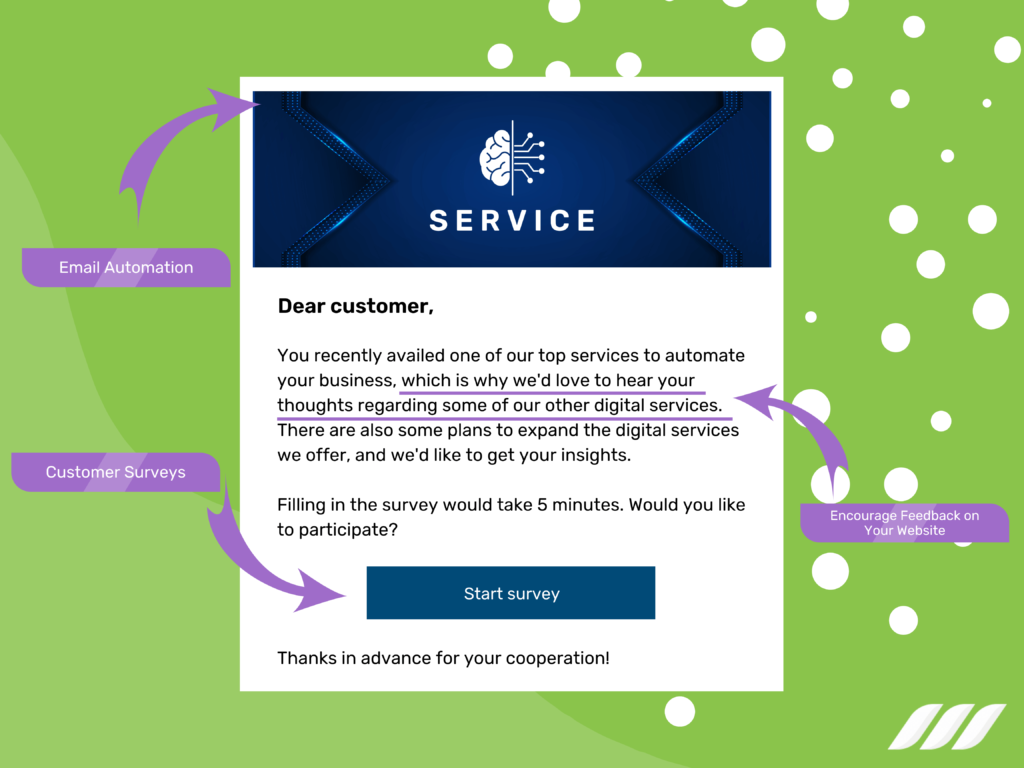

Email Automation
Depending on your email marketing service, you can automate feedback collection emails.
For this, you’ll need to activate the option of adding new customers to your email list. Then, schedule emails a few weeks after purchase and ask customers about their experience. This will give the customer adequate time to test your product.
Related article: Best Email Marketing Automation Tools
Customer Surveys
Another fast way to gather feedback is through a customer survey form. This works well for brands aware of pivotal questions, and open-ended responses are of little use.
Consider generating questions about the solution you aim to provide and other specific details about user experience.
Related article: How to Ask for Referrals From Your Customers
Encourage Feedback on Your Website
A simple text input box could be added on your website entitled, “Share your thoughts about [insert product name]”. Alternatively, include a survey link for more focused questions.
Take it From There
Launching a digital product is a cyclic process. From here on out, you’ll use similar tactics as before to scale your business.
Take for example email sequencing to see how you could use it for lead acquisition and customer retention:
- Nurture sequences – deliver information to introduce prospects to your company/products. Tell them about the pain points it solves and how they could leverage it.
- Onboarding sequences – when people sign up, walk them through the process of using your digital product. You could extend to, for example, showcasing how it could be integrated with their business.
- Conversion sequences – In this closing stage, you’ll be sharing more sales-specific information. Highlight case studies, notable customers, success stories, and testimonials.
Related article: How to Convert Leads Into Customers
Besides email campaigns, continue guest-posting to get new prospects, onboard more affiliates to drive more sales, and keep producing blog posts for giving free information.
Also, it is a good practice to ramp up your conversion rates with paid advertising on LinkedIn, Facebook, Instagram, and Google Ads.
Best Practices for Creating Digital Products
Here’re some essential tips on how to create digital product:
1. Stick to User-Centered Approach
A user-centered approach involves putting your users at the center of your product journey. Making decisions requires a deeper understanding and consideration of their needs, motivations, problems, and behavior.
With a user-centered approach, you’ll be using great attention to user detail. This way, you can add features that add value to user experience and shift your focus to where it truly matters.
The end results? Customer satisfaction and loyalty.
2. Develop Roadmap and Set Clear Goals
Having a product roadmap will help you frame your goals and objectives, as well as a timeline to complete your launch.
For one, this will keep everyone in the product development team aligned. It also communicates the right time to make decisions to give your product a direction. You will also conduct your pre-launch ventures with this frame of reference.
When you set clear goals, converge your team’s effort and resources in achieving them. It also helps prioritize tasks, increases your efficiency, and decreases your launch time.
3. Create a Culture of Experimentation
Experiments will allow you to keep testing new product ideas and features.
Not only will this lead to innovative solutions, but it will keep you from spending on initiatives that would possibly fail.
As you test new experiments, use data analytics to make informed decisions.
For example, a high churn rate may be related to a higher difficulty level of your assessments. If you notice poor performances in the tests, you could downgrade the difficulty level and see if it improves customer retention.
Read also: How to Announce New Product Features by Email
4. Provide a Personalized Experience
A great way to take user experience up a notch is by providing a personalized experience. This part is about making the user feel that the product is made for them ‘specifically.’
Giving special treatment to your customers could mean using their data insights to send personalized notifications, recommendations, personal trends, and stats.
Plus, you can exceed the user’s expectations by offering something for their loyalty to your brand. This could mean:
- Emails of gratitude for X years of loyalty.
- Award for purchasing from you after a long time.
- Posters to celebrate the user’s event (top customer of the month, user’s birthday, etc.)
5. Offer a Visual Treat
The appearance of your digital product and how you display it to your audience can make a lot of difference. For instance, you can turn your electronic card unbelievably realistic with vibrant design elements, funny illustrations, or quirky fonts.
Here’s how to create visually appealing work:
- Keep the colors according to your brand’s personality.
- Feature 3D animation where possible.
- Keep your font consistent and big enough.
- Position necessary buttons (signup, buy now, etc.) on reachable locations.
- Make sure that the contents fit the screen.
6. Keep Learning
Always stay aware of market dynamics and industry trends because it will help you stay ahead of the curve. When you know what’s happening in the industry, you can anticipate customer needs and wants and tweak your product accordingly.
This will also tell you where your product stands in the market and what changes it calls for. Besides, keep tabs on new technologies and tools that help improve your digital product and customer experience.
Getting industry-specific insights by reading survey reports, attending conferences, taking courses, and networking with key figures is also good. By continuously learning, you’ll be able to make informed decisions and get the competitive edge to keep your digital business thriving.





Conclusion
Let’s recap what creating and launching a digital product looks like in a nutshell:
- Conduct market research and build a buyer persona.
- Create a minimum viable product.
- Develop a community.
- Validate your digital product idea.
- Test MVP and improve it.
- Promote your digital product before and after launch.
- Test everything is working correctly.
- Gather feedback and iterate.
This comprehensive guide on how to launch a digital product can help steer your efforts in the right direction. While it may seem a lot of work, it is far easier than creating a physical product. The best part? Digital products offer greater profit margins and they’re super easy to scale.

![How to Write a Price Increase Letter [Tips, Examples, and Free Template]](https://dripify.io/wp-content/uploads/2021/12/27.png)
![How to Write an Effective Collaboration Email [+Templates]](https://dripify.io/wp-content/uploads/2023/05/13.png)



